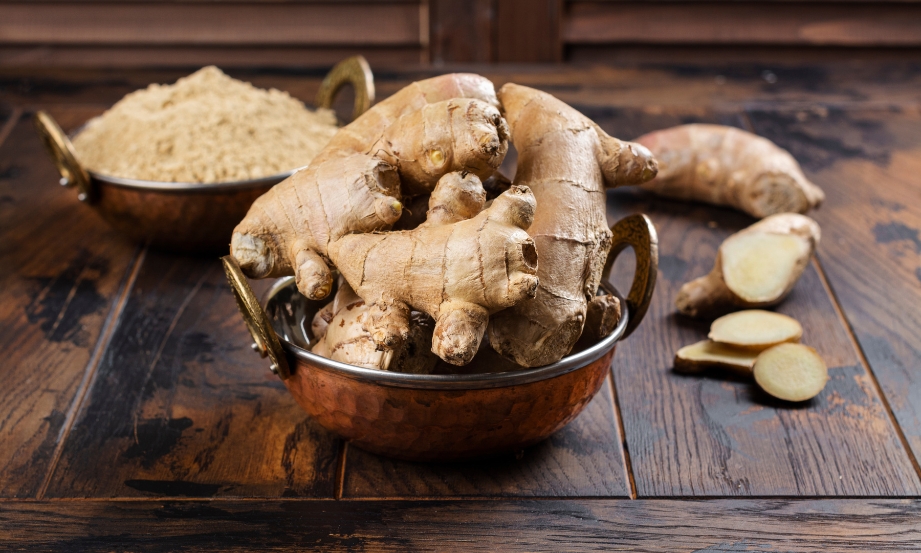
Ginger lily, known for its captivating floral aroma with subtle spicy undertones, is a treasured ingredient in perfumery and wellness products. Extracted from the fragrant blooms of the Hedychium genus, ginger lily offers a unique sensory experience that combines elegance with versatility. Its essential oil is celebrated for its therapeutic properties, unique chemical composition, and adaptability in various formulations.
This article explores the distinctive aroma of ginger lily, its uses, formulations, and unique chemical properties, highlighting its timeless appeal and growing significance in fragrance and personal care industries.
The Alluring Aroma of Ginger Lily
What Makes Ginger Lily’s Aroma Distinctive?
- The floral scent of Ginger lily is light yet luxurious, with a subtle warmth that distinguishes it from other floral fragrances.
- Its aroma evokes a sense of tranquillity and sophistication, making it a favourite in high-end perfumery.
Aroma Profile
- The fragrance of ginger lily blends delicate floral notes with hints of spice and earthiness.
- This balance makes it suitable for a range of applications, from perfumes to aromatherapy blends.
Cultural and Traditional Significance
- Ginger lily has been used in traditional rituals and ceremonies for its pleasing aroma and calming properties.
- Its scent symbolizes purity and renewal, often featured in religious and wellness practices.
Chemical Properties of Ginger Lily
Chemical Composition
- Ginger lily essential oil contains compounds like terpenes, phenols, and alcohols, contributing to its distinct fragrance and therapeutic benefits.
- Key components include linalool, terpineol, and methyl eugenol, which provide anti-inflammatory, antimicrobial, and calming effects.
Aromatic Stability
- The chemical composition of ginger lily oil ensures excellent aromatic stability, making it ideal for long-lasting formulations.
- Its resilience to oxidation enhances its shelf life and performance in various products.
Skin-Friendly Properties
- The gentle nature of its chemical structure makes ginger lily suitable for sensitive skin.
- It is often used in formulations designed to soothe and hydrate the skin.
Synergy with Other Ingredients
- Ginger lily’s chemical profile allows it to blend seamlessly with other essential oils and fragrance compounds.
- This synergy enhances the complexity and richness of fragrances in which it is used.
Uses of Distinctive Floral Aromain Ginger Lily
In Perfumery
- Base and Heart Notes: Ginger lily is commonly used as a heart note in perfumes, adding depth and elegance to fragrance compositions.
- Blends with Citrus and Wood: Its versatility allows it to complement citrusy top notes and woody base notes, creating balanced and sophisticated scents.
In Skincare
- Hydration and Soothing: Ginger lily oil is used in creams and lotions for its ability to hydrate and soothe the skin.
- Natural Fragrance: Its floral scent eliminates the need for synthetic fragrances, aligning with the clean beauty trend.
In Home Fragrances
- Candles and Diffusers: Ginger lily’s long-lasting aroma is perfect for creating an inviting ambiance in living spaces.
- Potpourri and Sachets: Its scent adds a touch of natural luxury to home décor items.
Formulations Featuring Ginger Lily
Perfume Blends
- Luxurious Floral Scents: Combine ginger lily with jasmine, rose, and ylang-ylang for a rich floral perfume.
- Exotic Orientals: Blend with sandalwood, patchouli, and amber for an exotic, spicy fragrance.
Skincare Products
- Moisturizing Creams: Add ginger lily oil to a base cream for enhanced hydration and a subtle natural fragrance.
- Face Masks: Incorporate ginger lily into clay masks for its soothing and aromatic properties.
Hair Care
- Shampoos and Conditioners: Ginger lily oil is used in hair care products for its calming fragrance and scalp-soothing properties.
- Leave-In Treatments: Its gentle scent lingers, adding a touch of elegance to everyday routines.
Why Choose Ginger Lily in Formulations?
Distinctive Aroma
- Ginger lily has unique scent sets it apart from conventional floral fragrances, offering a sophisticated and memorable olfactory experience.
Versatile Applications
- From luxury perfumes to calming aromatherapy blends, ginger lily adapts to a wide range of uses, making it a valuable ingredient in personal care.
Natural Appeal
- Its plant-based origin aligns with the growing consumer preference for natural and organic products.
- Ginger lily has an eco-friendly nature enhances its appeal to sustainability-conscious users.
Compatibility with Trends
- Ginger lily complements current wellness and clean beauty trends, ensuring its relevance in modern formulations.
Global Demand for Ginger Lily
Europe
- Luxury Skincare: European markets, particularly in France and Germany, value ginger lily for its soothing properties in skincare products.
- Aromatherapy Growth: The popularity of aromatherapy in Europe has led to rising demand for ginger lily in essential oil blends.
Asia-Pacific
- Traditional Roots: In countries like India and China, ginger lily is used in traditional wellness practices and modern formulations.
- Expanding Markets: Emerging middle-class consumers in Asia-Pacific are driving demand for high-quality natural fragrances.
Middle East
- Cultural Significance: The Middle East appreciates rich and exotic aromas, making ginger lily a popular choice in perfumery.
- Growing Fragrance Market: The region’s increasing investment in luxury fragrance brands supports the rise of ginger lily as a key ingredient.
Conclusion
Ginger lily stands out as a versatile and effective ingredient for creating exceptional fragrances and wellness products. Its distinctive floral aroma, coupled with its soothing properties and chemical stability, makes it a prized addition to formulations worldwide.
Recent Posts
- BMV Fragrances to Participate in Two Premier Global Exhibitions : SIMPPAR & Beautyworld 2025
- Saffron Extract: Blending Iranian Richness and Indian Precision
- How Oudh 13 Delivers Rich Fragrance and Reliable Performance in Perfumery?
- Balsamic Depth and Woody Elegance of Resinoid Guggul
- Resinoid Galbanum in the Aromatics Industry: Growing Key Trends
- Resinoid Benzoin in Perfume and Cosmetic Industries: Growing Demand
- Resinoid Tolu Pourable: Composition, Aroma, Uses and Stability
Copyright @ 2025 | BMV Fragrances Private Limited | All Rights Reserved
Website Design & Digital Marketing by webmasterindia.
